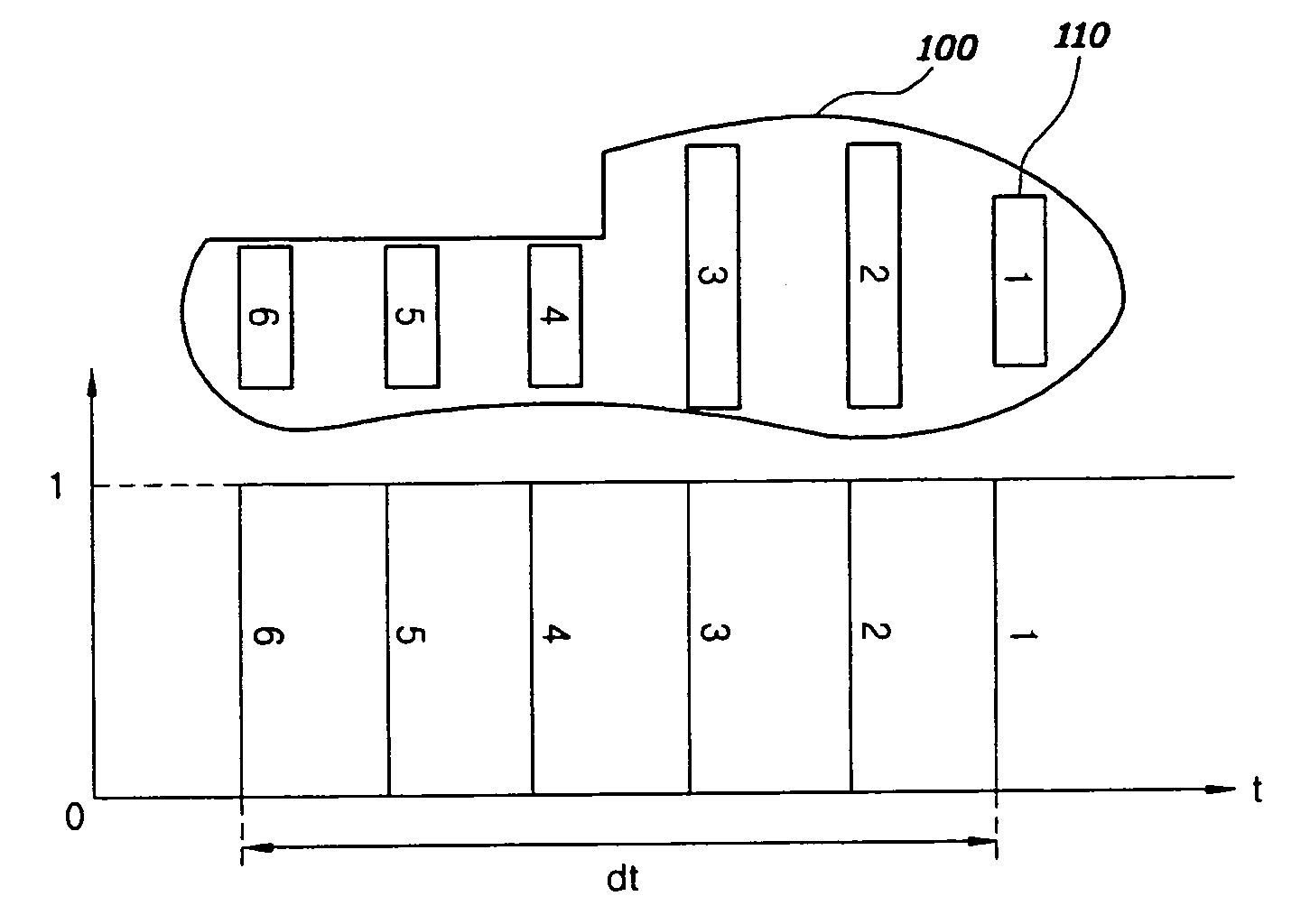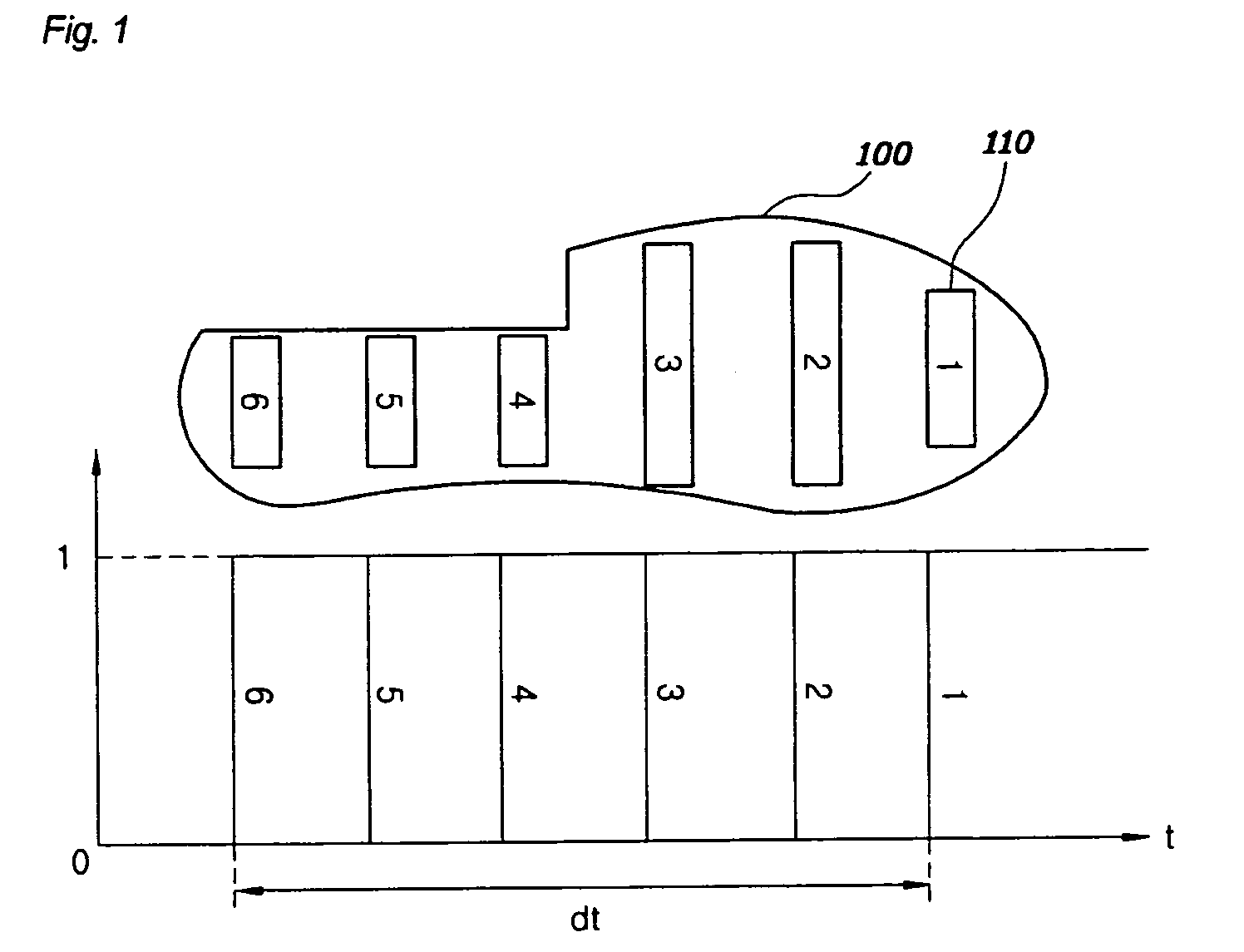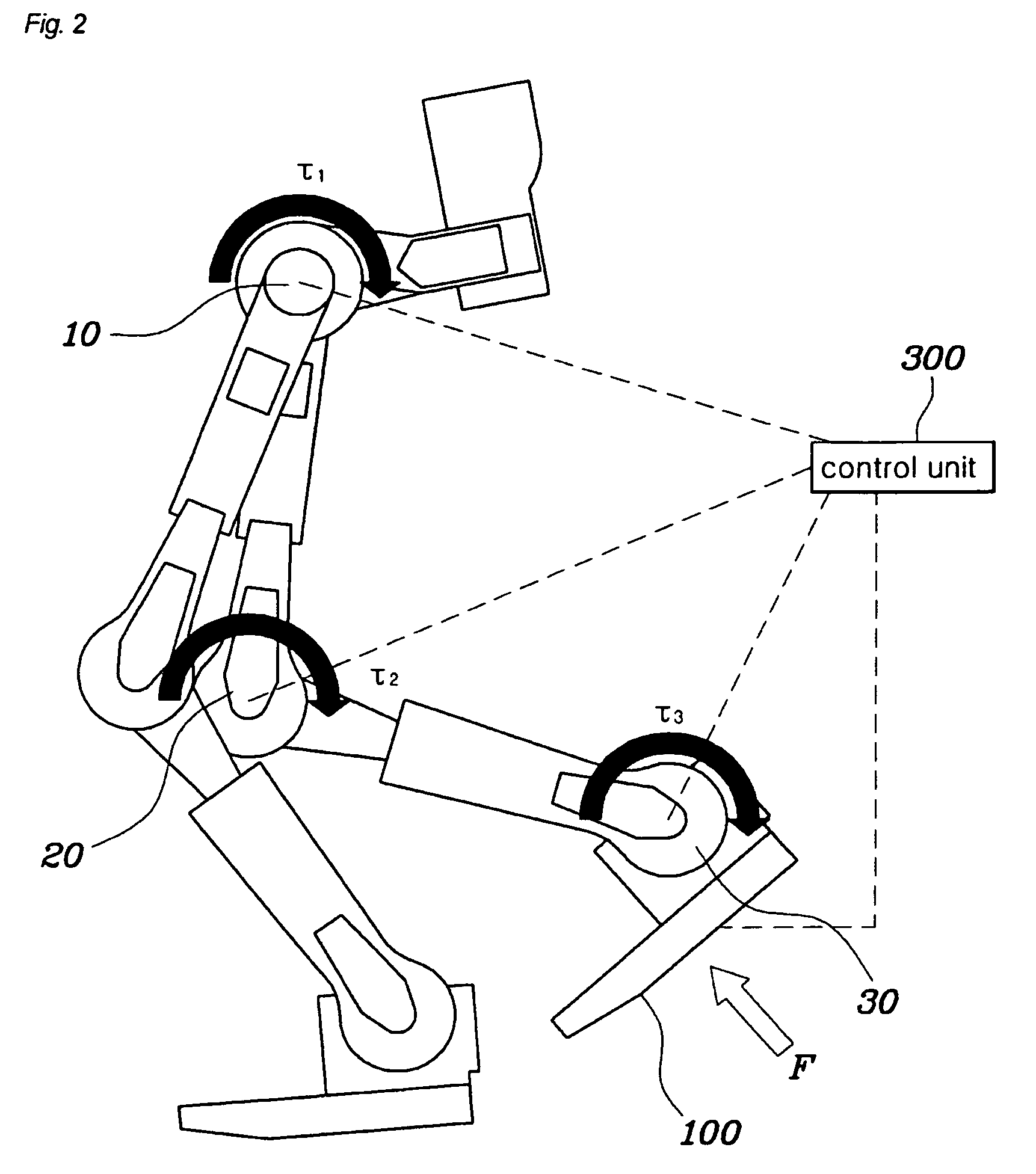Method and system for controlling gait of robot
a technology of wearable robots and gaits, applied in the direction of electric programme control, program control, instruments, etc., can solve the problems of difficult difficult to actively and variably control the robot, and inability to precisely determine the intended gait of the wearer, etc., to achieve the effect of reducing production costs, reducing load and comfortable wearing sensation
- Summary
- Abstract
- Description
- Claims
- Application Information
AI Technical Summary
Benefits of technology
Problems solved by technology
Method used
Image
Examples
Embodiment Construction
[0030]Hereinafter, a method and system for controlling the gait of a robot according to a preferred embodiment of the present disclosure will be described in detail with reference to the attached drawings.
[0031]FIG. 1 is a view illustrating surface contact sensors used in a method for controlling the gait of a robot, according to an exemplary embodiment of the present disclosure. FIG. 2 is a view illustrating construction of a system for controlling the gait of a robot, according to an exemplary embodiment of the present disclosure. FIG. 3 is a flowchart of an exemplary robot gait control method according to the present disclosure. FIG. 4 is a graph showing a trigonometric function of the robot gait control method according to the present disclosure.
[0032]FIG. 3 is a flowchart of an exemplary robot gait control method according to the present disclosure. The robot gait control method includes a determination step S100 of determining whether the robot is in a walking state and determ...
PUM
 Login to View More
Login to View More Abstract
Description
Claims
Application Information
 Login to View More
Login to View More - Generate Ideas
- Intellectual Property
- Life Sciences
- Materials
- Tech Scout
- Unparalleled Data Quality
- Higher Quality Content
- 60% Fewer Hallucinations
Browse by: Latest US Patents, China's latest patents, Technical Efficacy Thesaurus, Application Domain, Technology Topic, Popular Technical Reports.
© 2025 PatSnap. All rights reserved.Legal|Privacy policy|Modern Slavery Act Transparency Statement|Sitemap|About US| Contact US: help@patsnap.com



